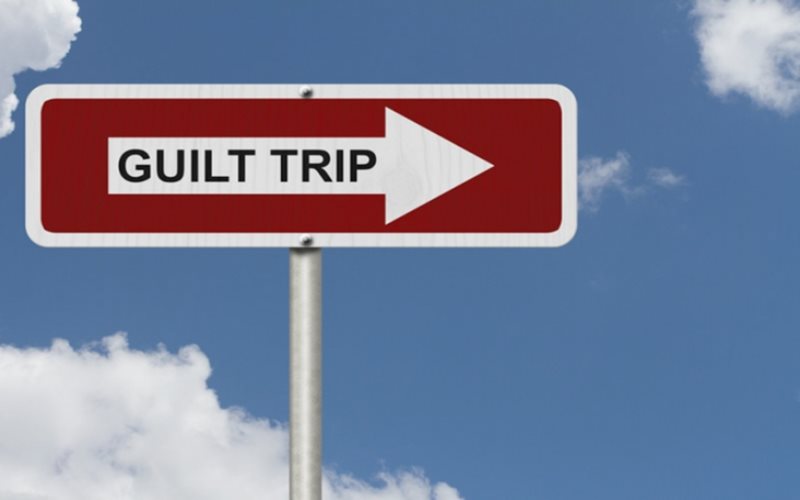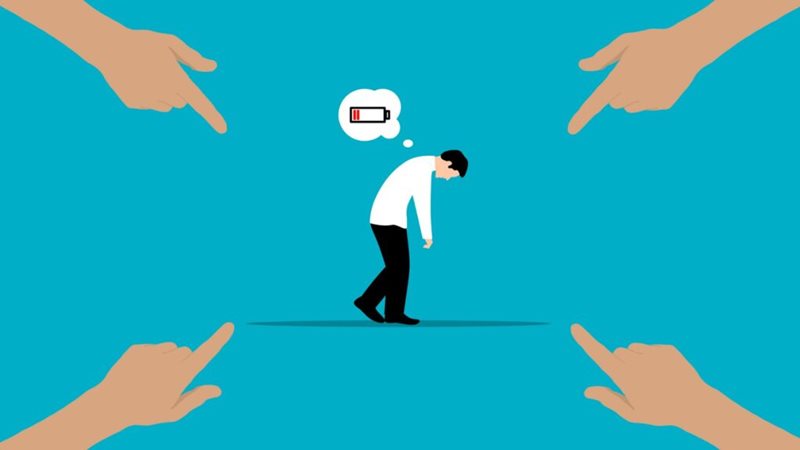Guilt trip is an art of making someone feel guilty about something, say experts. To learn more about this manipulative tactic, read on!
1 What is a Guilt Trip?
 What is a Guilt Trip?
What is a Guilt Trip?
Guilt trip refers to the feeling of guilt one experiences when they do something wrong or forget to do something. On the other hand, guilt-tripping is an act of making someone feel guilty repeatedly, to the point that they feel compelled to do something to make it up to you.
Psychologically speaking, a guilt trip is a form of manipulation. The manipulator will make you feel like your actions are wrong and shameful, and this sense of guilt will lead you to do something for them to make up for your “mistake.” Some people understand this concept well and use it skillfully to their advantage.
2 Signs That You Are Being Guilt-Tripped
 Signs That You Are Being Guilt-Tripped
Signs That You Are Being Guilt-Tripped
The signs of being guilt-tripped can be subtle and hard to detect, but here are some common indicators:
-
Bringing up your past mistakes or embarrassing stories.
-
Making sarcastic comments about your efforts.
-
Complaining that you haven’t done as much as they have.
-
Refusing to talk to you or giving you the silent treatment when you try to make amends.
-
Making you feel like you owe them.
-
Displaying anger through body language, such as crossed arms, heavy sighs, or breaking things.
3 Why Do Some People Use Guilt Trips?
 Why Do Some People Use Guilt Trips?
Why Do Some People Use Guilt Trips?
There are various reasons why someone might use a guilt trip, but the common goal is to manipulate others’ feelings of guilt for personal gain. Here are some additional reasons why people might resort to guilt trips:
-
Psychological manipulation: To manipulate someone into doing something they might not want to do.
-
Conflict avoidance: Using guilt trips to avoid direct confrontation, thereby sidestepping potential conflicts.
-
Behavior and moral education: The feeling of guilt and wrongdoing can lead to increased attention and subsequent correction.
-
Eliciting sympathy: Guilt-tripping can cast the manipulator as a victim, inviting sympathy from others.
4 In Which Relationships is Guilt-Tripping Common?
 In Which Relationships is Guilt-Tripping Common?
In Which Relationships is Guilt-Tripping Common?
Guilt-tripping is most prevalent in close relationships, such as with a romantic partner, best friend, family member, or colleague. However, it can occur in any relationship. The guilt-tripper aims to make the other person feel responsible for their words or actions and manipulate them into doing something beneficial for the manipulator by exploiting their sense of guilt.
5 How to Deal with Guilt Trips
 How to Deal with Guilt Trips
How to Deal with Guilt Trips
Listen and Empathize
When you recognize the signs of a guilt trip, let the other person know that you understand their needs and try to meet them without compromising yourself. Using guilt trips can be damaging to relationships, so early recognition can help both parties address the issue and feel more comfortable.
Set Boundaries
Establish clear boundaries to prevent others from forcing you to do things against your will. Also, make sure to communicate the consequences of crossing those boundaries.
Engage in Open Communication
If you realize that someone is guilt-tripping you, or even if they are doing it unintentionally, try to communicate openly and find a solution that works for both of you.
Today’s article has provided insight into what a guilt trip is and how to deal with it in your daily life. We hope that you now have a better understanding of guilt trips and have found this information useful.
Source: Hellobacsi.com

































